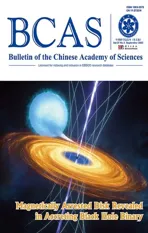Making Plastics Greener and More Useful
2023-11-15

Scientists make polyethylene, a common polymer for making plastic bags, photodegradable, which may offer a new approach to plastic waste reduction.(Image by Pixabay)
Scientists from the Changchun Institute of Applied Chemistry of the Chinese Academy of Sciences (CAS)have developed a new way to make plastics to make it possible to be degradable in ambient environment with proper lighting.This move could help reduce plastic pollution.The new approach produces plastics from ethylene gas and carbon monoxide using specialized catalysts.This innovation incorporates two features to make the new-type plastics superior: the ability to degrade under ultraviolet light, and the new hydrophilic surface induced by introduction of new functional groups.The study was published inNational Science Review(doi: 10.1093/nsr/nwad039).
Plastics fabricated this way retain the useful bulk properties of conventional polyethylene plastics – they are moldable, lightweight, and sturdy.On top of this, the trace amounts of ketone groups enable the materials to break down when exposed to sunlight, addressing the problem of plastic persistence in the environment; and the added polar groups allow the plastics to adhere better to other materials, expanding their potential applications.
The researchers say the next step is to optimize the industrial-scale manufacturing catalytic process.The improved sustainability and functionality of the new plastics could make them attractive alternatives to conventional plastics for certain applications.With further development, these “green” plastics may become a valuable weapon in the fight against plastic waste.
杂志排行
Bulletin of the Chinese Academy of Sciences的其它文章
- China Launches Major Consortium to Accelerate Aging Research
- Fossil Unveils Leaf Eating among Earliest Birds
- Unveiling the Dynamic World of Human Macrophage Specification during Prenatal Development
- The Evolutionary Significance of Inflammation in Disease Defense
- Scientists Reveal Mechanism Behind Preferential Recognition of H2A.Z Nucleosome during DNA Replication Initiation
- Scientists Map Single-Cell Spatial Distribution Atlas of Macaque Cortex
